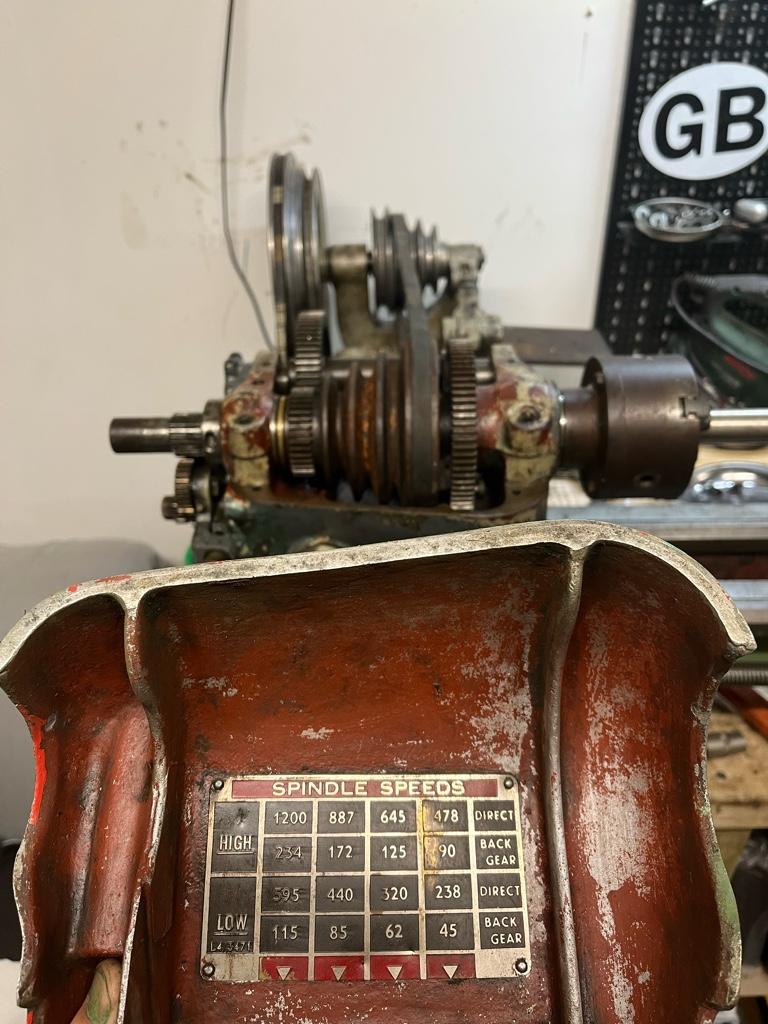- Joined
- Jul 6, 2022
- Messages
- 498
Really basic question but I’ve just got my first lathe that has speed control via pulleys and reading the data plate doesn’t make sense to me. The motor has two pulley sizes on the motor end and the pulley assembly (does this have a proper name?) end. There’s 4 combinations already. There are 4 pulley sizes in the head stock and 4 at the pulley assembly end and then there’s direct drive and with back gears.

My data plate suggests there are 16 speeds, but with the combinations I can see from what I’ve posted above, I’d have a lot more, wouldn’t I? I’m assuming High and Low are the motor speeds, direct and back gear i get, but I’m getting confused as to where the belt needs to be on the pulley assembly at the back and where it needs to be in the head stock to achieve the speeds on the data plate?
Sent from my iPhone using Tapatalk

My data plate suggests there are 16 speeds, but with the combinations I can see from what I’ve posted above, I’d have a lot more, wouldn’t I? I’m assuming High and Low are the motor speeds, direct and back gear i get, but I’m getting confused as to where the belt needs to be on the pulley assembly at the back and where it needs to be in the head stock to achieve the speeds on the data plate?
Sent from my iPhone using Tapatalk

